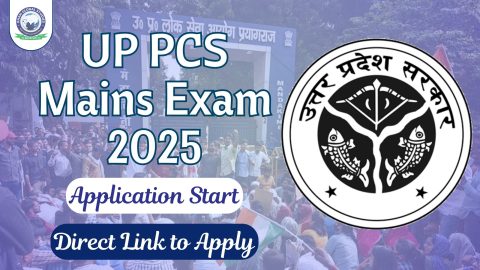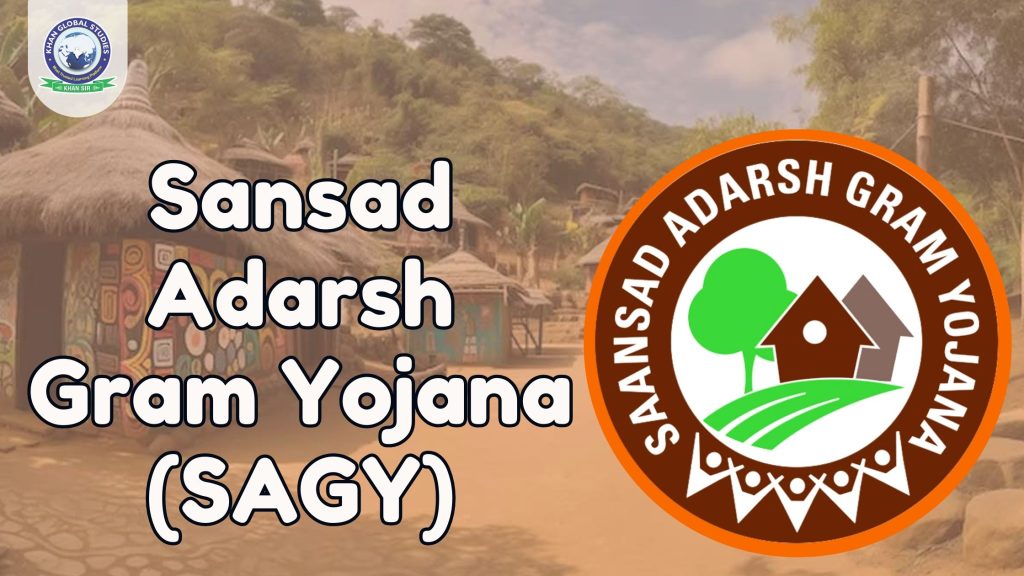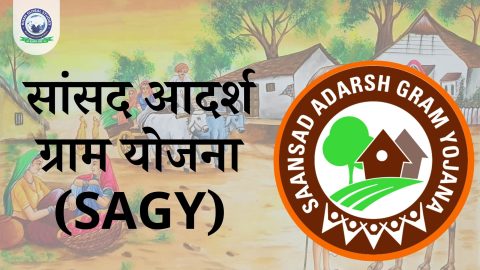Launched on 11 October 2014, Sansad Adarsh Gram Yojana (SAGY) is a testament to Mahatma Gandhi’s vision, aimed at transforming his concept of an ideal Indian village into a contemporary reality. Under the aegis of this programme, each MP adopts a Gram Panchayat and spearheads its comprehensive development with emphasis on infrastructure enhancement as well as social upliftment. These ‘Adarsh Grams’ are envisaged as centres of local development and governance that will serve as inspirational models for other Gram Panchayats.
A village development blueprint is carefully prepared under the leadership of the MP by actively involving the villagers and using scientific methods. What makes this scheme unique is its demand-driven, society-inspired and people’s active participation-based feature.
Objective of Sansad Adarsh Gram Yojana
- Catalyze Holistic Development: To initiate processes that promote the all-round development of the identified Gram Panchayats.
- Enhanced Quality of Life: Significantly enhance the standard of living and overall quality of life of all social classes:
- Enhanced infrastructure,
- Increased productivity,
- Enhanced human development,
- Better livelihood prospects,
- Reduced inequalities,
- Ensuring access to rights and entitlements,
- Broader social mobilization,
- Enhanced social capital.
- Creating Replicable Models: Generating paradigms of local-level development and strong local governance that can inspire neighbouring Gram Panchayats to emulate and adapt.
- Nurturing Model Villages: Promoting designated Adarsh Grams as hubs of local development, acting as training grounds for other Gram Panchayats.
Core Values
Beyond just infrastructure, SAGY seeks to instill deep values within villages and their inhabitants, transforming them into replicable models for others:
- People-Centric Participation: Embracing the participation of all social classes in every aspect of village life, especially in decision-making related to governance.
- Follow Antyodaya: Empower the “poorest and most vulnerable” individuals of the village to achieve welfare.
- Gender Equality and Respect for Women: Affirm gender equality and ensure that women are respected and valued.
- Social Justice: Guarantee fairness and equality for all.
- Dignity of Labour and Community Spirit: Promote the dignity of labour and foster a spirit of community service and volunteerism.
- Culture of Cleanliness: Develop a culture of cleanliness and hygiene.
- Harmony with Nature: Ensure that development is in balance with ecological conservation.
- Cultural Heritage: Preserve and promote local cultural heritage.
- Cooperation: Instill a spirit of cooperation, self-help and self-reliance.
- Peace and Harmony: Promote peace and harmony within the village community.
- Transparency and Accountability: Maintain transparency, accountability and integrity in public life.
- Local self-governance: Promote and strengthen local self-governance.
- Constitutional Values: Follow the values enshrined in the fundamental rights and duties of the Indian Constitution.
Benefits
Activities
- The elements that constitute an ideal village are context-specific, yet some essential activities can be broadly identified across personal, social, human, economic and environmental development, as well as social security, infrastructure and governance.
- Personal Development: Promote hygienic behaviour, inculcate healthy habits and reduce risky behaviour.
- Human Development: Ensure universal access to basic health facilities, full immunisation and a balanced sex ratio, among other goals.
- Social Development: Encourage volunteerism, respect local role models and promote a crime-free environment.
- Economic Development: Promote diversified agriculture and allied livelihoods, rural industrialisation and skill development.
- Environmental Development: Ensure clean and green villages through activities such as tree planting, social forestry and watershed management.
- Infrastructure: Provide pucca houses, clean drinking water, all-weather roads and other essential services.
- Social Security: Ensure universal access to pension, health insurance and public distribution system (PDS) for eligible families.
- Good Governance: Strengthening local democracy, ensuring e-governance, timely service delivery and proactive disclosure of information.
Use of Technology and Innovation in SAGY
Technology adoption and innovation are critical to the success of SAGY, including in areas such as space applications, mobile-based technology, agriculture and livelihood innovation, and sustainable construction methods.
Eligibility
- Basic Unit: Gram Panchayat should serve as the basic unit.
- Population Criteria: The population of the village should be 3000-5000 in plain areas and 1000-3000 in hilly, tribal and remote areas.
- Role of MP: The MP identifies a suitable Gram Panchayat, excluding the village of his/her spouse.
- Multiple Selection: The MP initially selects one Gram Panchayat, followed by selecting two more.
- Lok Sabha MP: Must select one Gram Panchayat from within his/her constituency.
- Rajya Sabha MP: Select one Gram Panchayat from a rural district within his/her elected state.
- Urban Constituencies: MPs from urban constituencies will select a Gram Panchayat from a nearby rural constituency.
- Continuity: The Gram Panchayats chosen by MPs whose term has ended will continue under SAGY and newly elected MPs will have the option to choose a different Gram Panchayat.
Application Process
A Member of Parliament (MP) shall identify a suitable Gram Panchayat from the rural area of any district in the country other than his/her village or the village of his/her spouse.
Conclusion
Sansad Adarsh Gram Yojana is a visionary initiative that aims to transform Mahatma Gandhi’s dream of an ideal village into a modern-day reality. By focusing on holistic development, social upliftment and technological innovation, SAGY seeks to create sustainable and self-reliant villages that stand as symbols of progress and an inspiration to others.





